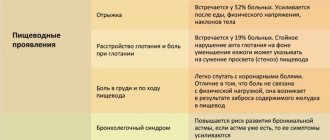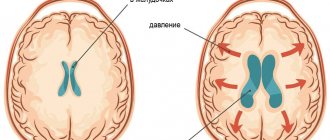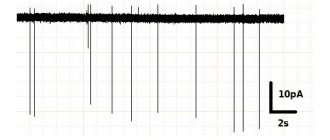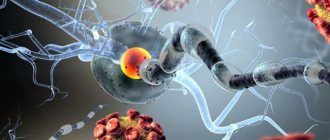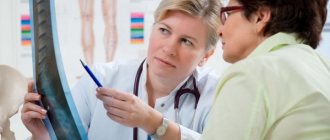general information
Epilepsy attacks have been known to people for a very long time. It was either mistaken for demonic possession or associated with a person’s special talent. Today, one or another form of pathology is observed in 10 people out of 1000. Symptoms can occur in newborns and the elderly, in men and women with the same frequency. Moreover, similar processes occur in the central nervous system of some animals, for example, dogs.
The main mechanism for the occurrence of attacks is the synchronization of the work of all nerve cells in a certain area. It is called an epileptogenic focus and determines the set of symptoms and their severity. Contrary to popular belief, the disease is not limited to seizures with loss of consciousness. There are a large number of variants of seizures with varied symptoms, depending on the area of the brain in which the pathological focus occurs.
Make an appointment
Causes
The functioning of the brain is a complex process that requires the constant interaction of many structures. A failure at any level can cause the formation of an epileptogenic focus. Among the most common causes of epilepsy in adults and children are:
- heredity;
- traumatic brain injuries;
- acute or chronic intoxication, especially alcoholism;
- infectious lesions of the brain or its membranes (encephalitis, meningitis);
- acute and chronic cerebrovascular accidents, including strokes;
- malignant and benign tumors in the cranial cavity;
- birth injuries;
- parasites that develop in brain structures: echinococcus, pork tapeworm;
- neurodegenerative diseases (Alzheimer's disease, multiple sclerosis, Pick's disease);
- hormonal imbalances, especially lack of testosterone;
- metabolic disorders, etc.
There are cases when the cause of epilepsy cannot be identified. In this case, the disease is called idiopathic.
Why do seizures occur?
Causes of tonic seizures
Prolonged muscle tension occurs against the background of excessive excitability of cerebral structures, in conditions of disruption of the cortical regulation of segmental functions. Very often, neurons are negatively affected by toxic, metabolic factors, and endocrine and metabolic disorders. The causes of tonic seizures are the following conditions:
- Infections
: tetanus, rabies, febrile syndrome. - Electrolyte disturbances
: hypocalcemia, hyperkalemia, hypomagnesemia. - Endocrine disorders
: hyper- and hypoglycemia, hyperinsulinism. - Hereditary metabolic diseases
: amino acid (leucinosis, phenylketonuria), carbohydrate (glycogenosis, galactosemia), lipid (Gaucher disease, Norman-Wood disease). - Cardiovascular pathology
: complete atrioventricular block, acute hypotension. - Renal and liver failure
: uremia, bilirubin encephalopathy. - Psychogenic disorders
: hyperventilation syndrome, hysteria. - Epileptic syndromes of childhood
: Lennox-Gastaut encephalopathy, Otahara encephalopathy, infantile spasms. - Intoxication
: alcohol, carbon monoxide poisoning, strychnine. - Overdose of drugs
: morphine, antipsychotics. - The effect of physical factors
: severe overheating or hypothermia, electrical injuries, the influence of radiation.
Sometimes painful spasms are of a professional nature, occurring during prolonged muscle tension in stenographers, musicians, and milkmaids. Leg cramps are common among athletes and people whose work involves standing for long periods of time. They are often observed during pregnancy, with vascular pathology of the lower extremities - varicose veins, obliterating atherosclerosis, endarteritis.
Causes of clonic seizures
Pathological impulses that provoke short-term spasms of skeletal muscles are formed in higher cortical centers, the extrapyramidal system or peripheral motor neurons. Some clonic seizures develop due to focal damage to the brain stem or spinal cord due to tumors and strokes. Other causes of such seizures include:
- Focal epileptic seizures
. - Children's infections
: measles, chickenpox, influenza, parainfluenza. - Severe myoclonic epilepsy of infancy (Dravet syndrome)
. - Diffuse damage to gray matter
: Creutzfeldt-Jakob disease, subacute sclerosing panencephalitis. - Neurodegenerative conditions
: Tay-Sachs, Alpers diseases. - Non-progressive encephalopathies
: with Down syndrome, tuberous sclerosis. - Neonatal paroxysms
: “fifth day seizures”, benign familial epilepsy. - Poisoning
: drugs (piperazine, ergotamine), chemicals (formaldehyde, arsenic).
Causes of tonic-clonic seizures
Often in the clinical picture there is a change from tonic convulsive contractions to clonic ones. Generalized mixed seizures are a typical sign of epilepsy and its severe complication - epistatus. The occurrence of paroxysmal electrical activity of brain neurons is caused by a wide range of damaging factors:
- Cerebral pathology
: vascular disorders (CVA, arteriovenous malformations, aneurysms), traumatic brain injuries, tumors. - Infectious diseases
: polio, cholera, neuroinfections (meningitis, encephalitis, abscesses). - Arterial hypertension
: renal eclampsia, convulsive form of hypertensive crisis. - Toxicoses of pregnancy
: eclampsia. - Hereditary pathology
: leukodystrophy. - Intoxication
: nicotinic, narcotic (amphetamine, cocaine), poisoning (organophosphorus compounds, oxalic acid, lead). - Overdose of medications
: caffeine, atropine, amitriptyline, etc.
Types and symptoms
Epilepsy is multifaceted and multifaceted; its symptoms are not limited to seizures. The most common classification is depending on the severity of attacks and their main manifestations.
Aura (harbingers)
Many epileptic seizures begin with an aura. This is the name given to a complex of specific sensations that occurs shortly before a seizure. Manifestations of an aura can be completely different: paresthesia (pathological sensations), a specific taste in the mouth, auditory, visual or olfactory hallucinations, etc. Before the appearance of an aura, a person often begins to experience causeless anxiety and internal tension.
Partial (focal) seizures
These conditions occur when a small area of the brain is involved in pathological overexcitation.
Simple partial seizures are characterized by preserved consciousness and last only 1-2 minutes. Depending on the location of the pathological focus, a person feels:
- sudden change of mood for no apparent reason;
- small twitching in a certain part of the body;
- feeling of déjà vu;
- hallucinations: lights before the eyes, strange sounds, etc.;
- paresthesia: a feeling of tingling or crawling in any part of the body;
- difficulty pronouncing or understanding words;
- nausea;
- change in heart rate, etc.
Complex attacks are characterized by more severe symptoms and often affect consciousness and thinking. Human can:
- lose consciousness for 1-2 minutes;
- there is no point in looking into emptiness;
- scream, cry, laugh for no apparent reason;
- constantly repeat any words or actions (chewing, walking in a circle, etc.).
Typically, during a complex seizure and for some time after it, the patient remains disoriented for some time.
Generalized seizures
Generalized seizures are one of the classic signs of epilepsy that almost everyone has heard of. They occur if the epileptogenic focus has spread to the entire brain. There are several forms of seizures.
- Tonic convulsions. The muscles of most of the body (especially the back and limbs) simultaneously contract (come to tone), remain in this state for 10-20 seconds and then relax. Such attacks often occur during sleep and are not accompanied by loss of consciousness.
- Clonic convulsions. Rarely occur in isolation from other types of attacks. Manifested by rhythmic rapid contraction and relaxation of muscles. The movement cannot be stopped or delayed.
- Tonic-clonic seizures. This type of attack is called grand mal, which means “great illness” in French. The attack is divided into several phases: precursors (aura);
- tonic convulsions (20-60 seconds): the muscles become very tense, the person screams and falls; at this time his breathing stops, his face becomes bluish, and his body arches;
- clonic convulsions (2-5 minutes): the muscles of the body begin to contract rhythmically, the person thrashes on the floor, foam is released from the mouth, often mixed with blood due to a bitten tongue;
- relaxation: convulsions stop, muscles relax, involuntary urination or defecation often occurs; consciousness is absent for 15-30 minutes.
After the end of a generalized seizure, a person remains for 1-2 days feeling overwhelmed, problems with coordination of movements and fine motor skills. They are associated with cerebral hypoxia.
- Atonic attacks. They are characterized by short-term muscle relaxation, accompanied by loss of consciousness and falling. The attack lasts literally 10-15 seconds, but after it ends the patient does not remember anything.
- Myoclonic seizures. They manifest themselves as rapid twitching of the muscles of individual parts of the body, usually the arms or legs. The seizure is not accompanied by loss of consciousness.
- Absence seizures. The second name for attacks is petit mal (minor illness). This symptom of epilepsy occurs more often in children than in adults and is characterized by a short-term loss of consciousness. The patient freezes in place, looks into emptiness, does not perceive speech addressed to him and does not react to it. The condition is often accompanied by involuntary blinking of the eyes, small movements of the hands or jaws. The duration of the attack is 10-20 seconds.
Pediatric epilepsy
Childhood epilepsy has many masks. In newborns, it can be manifested by periodic muscle contractions that do not resemble seizures, frequent tilting of the head back, poor sleep and general restlessness. Older children may suffer from classic seizures and absence seizures. Partial seizures most often occur:
- severe headaches, nausea, vomiting;
- short periods of speech disorder (the child cannot utter a single word);
- nightmares followed by screams and hysterics;
- sleepwalking, etc.
These symptoms are not always a sign of epilepsy, but they should serve as a reason for an urgent visit to the doctor and a full examination.
Classification
According to the mechanism of formation, convulsions are classified as rapid hyperkinesis, in the structure of which the phasic component predominates. They are divided into epileptic and non-epileptic, primary (idiopathic) and symptomatic (secondary). Depending on the nature of the predominant involvement of skeletal muscles, there are several types of convulsive contractions:
- Tonic
. Sharp and prolonged (up to several tens of seconds) muscle tension caused by the arrival of a nerve impulse of long duration. Leads to “freezing” of the limbs or body in a forced position. - Clonic
. Muscle spasms are short-term and irregular in nature, with rapid alternation of periods of contraction and relaxation. They have a locomotor effect, accompanied by motor acts. - Mixed
. Convulsive attacks characterized by a change from a tonic component to a clonic one or vice versa are called mixed. In most cases they are generalized (widespread) in nature.
Tonic spasms underlie athetosis; a type of clonic spasms is myoclonus - sudden and sharp (lasting up to a second) contractions of the flexor muscles. Based on the group of muscles affected, cramps can be flexor (flexor), extensor (extensor), or mixed. An important criterion that has found a place in the clinical classification is the prevalence of seizures, which allows us to distinguish two types of paroxysms:
- Partial (focal)
. They arise due to local activity involving a group of motor neurons. Accompanied by clonic or tonic contractions. They can be simple (without loss of consciousness), complex, secondary generalized. - Generalized
. Excitation immediately covers the entire cortex without the presence of an isolated focus, so the muscles of the entire body are involved in a seizure. Paroxysms are clonic, tonic, tonic-clonic. Myoclonic and atonic seizures are also distinguished.
Some conditions combine signs of focal and generalized paroxysms or are of an unspecified nature. In pediatric practice, afebrile and febrile convulsions, neonatal and infantile paroxysms are distinguished. The international classification for some seizures takes into account the prognosis (benign, severe).
Diagnostics
Neurologists diagnose and treat epilepsy. Some of them specifically expand their qualifications in this area, which allows them to act even more effectively.
Examination of a patient with suspected epilepsy includes the following methods:
- collection of complaints and medical history: the doctor asks the patient in detail about the symptoms that bother him, finds out the time and circumstances of their occurrence; a characteristic sign of epilepsy is the appearance of seizures against the background of sharp sounds, bright or flashing lights, etc.; special attention is paid to heredity, past injuries and diseases, the patient’s lifestyle and bad habits;
- neurological examination: the doctor evaluates muscle strength, skin sensitivity, severity and symmetrical reflexes;
- EEG (electroencephalography): a procedure for recording the electrical activity of the brain, allowing one to see the characteristic activity of an epileptogenic focus; if necessary, the doctor may try to provoke overexcitation using flashes of light or rhythmic sounds;
- MRI of the brain: makes it possible to identify pathological areas and formations: tumors, fissures, ischemic areas, consequences of a stroke, etc.;
- angiography of the vessels of the head: injection of a contrast agent into the blood followed by radiography; allows you to see areas of vasoconstriction and deterioration of blood flow;
- Ultrasound of the brain (Echo-encephalogram): used in children of the first year of life whose fontanel has not yet closed; visualizes tumors and other space-occupying formations, fluid accumulation, etc.;
- rheoencephalography: measurement of electrical resistance of head tissue, which can be used to diagnose blood flow disorders;
- general examinations: general blood and urine tests, blood biochemistry, tests for infections, ECG, etc. for a comprehensive assessment of the patient’s condition;
- consultations with specialized specialists: neurosurgeon, toxicologist, narcologist, psychiatrist, etc. (prescribed depending on the suspected cause of the attacks).
The list of studies may vary depending on the patient’s age, type of attack, presence of chronic pathologies and other factors.
Reanimatology School of Professor Sergei Vasilievich Tsarenko
Despite the seemingly a priori importance of the prophylactic use of anticonvulsants, the issue of primary prevention of seizures is not resolved with the help of medications. Numerous studies have shown that the prophylactic use of anticonvulsants does not reduce the frequency of seizures (JK McQueen et al., 1983; S. Manaka, 1992). Primary prevention of seizures is timely surgical treatment and prevention of secondary brain damage.
Indications for anticonvulsant therapy are the presence of EEG signs of convulsive syndrome (registration of the so-called peak-wave complexes) and the identification of clinical symptoms - partial seizures, full-blown seizures, a series of seizures and epistatus. In this situation, we are talking about the treatment and secondary prevention of seizures.
Each seizure may be accompanied by a sharp increase in ICP, impaired cerebral perfusion and ischemia. It is surprising that, despite the clear understanding of this thesis by most doctors, it is difficult to imagine another clinical situation that would be accompanied by the same amount of terminological and treatment confusion. Often, resuscitators do not clearly understand the terminology and clinical significance of a detailed neurological diagnosis and do not undertake the “hard” work of describing a seizure. But a detailed description of the seizure pattern allows us to assume the localization of the focus of ectopic activity, which is important for prognosis and choice of treatment tactics! To determine the prognosis, it is important to understand that any seizure is dangerous, but full-blown clinical-tonic seizures are more dangerous than partial ones, since the increase in ICP is much higher and cerebral ischemia is more significant. A series of seizures is more dangerous than a single seizure, and epistatus is more dangerous than a series of seizures. It is appropriate to recall that the difference between a series of seizures and epistatus is not in the number and nature of seizures, but in the fact that with a series of seizures the patient comes to consciousness in the intervals between them, and with epistatus he is in a coma. Naturally, such differentiation is impossible if the patient was in a coma before the seizure.
The second problem is the lack of understanding by doctors which drugs have anticonvulsant properties, what their comparative effectiveness is and the algorithm for clinical use. Without going into a detailed analysis of the problem, we will consider the main antiepileptic drugs. They are shown in Table 11. On the right side of the table, anticonvulsants are arranged in descending order of effectiveness. Since the intravenous form of not all of these drugs is registered in our country, the drugs available in Russian conditions for parenteral administration are also listed on the left side of the table in descending order of effectiveness.
Table 11. Modern anticonvulsants, listed in descending order of effectiveness
* – drugs that have both anticonvulsant and proconvulsant effects
A clear understanding of the hierarchy of effectiveness of anticonvulsants is of great clinical importance. Diazepam (Relanium, Seduxen, Sibazon) is a common emergency medicine, but is far from the most effective anticonvulsant drug. Barbiturates are somewhat outdated and also not very effective means for relieving seizures. In addition, thiopental and hexenal are short-acting, and phenobarbital and benzonal, although they have longer-lasting effects, require enteral administration. Sodium hydroxybutyrate has, in addition to anticonvulsant, in some cases, a proconvulsant effect.
Narcotic analgesics and muscle relaxants do not act at all on the seizure focus in the brain and relieve only the muscle component of seizures. The use of muscle relaxants is necessary only for tracheal intubation and synchronization with a respirator. In all other cases, the use of these drugs confuses the doctor, who believes that the convulsions have been stopped, when in fact, muscle contraction is simply not visible while the activity of the cerebral convulsive focus remains. It would not be worth talking about this if a common mistake in the treatment of convulsive syndrome is the use of muscle relaxants instead of anticonvulsants. At the same time, the administration of muscle relaxants masks the ineffectiveness of stopping seizures. This error leads to prolongation of status epilepticus and an increase in the number of complications.
Before moving on to the characteristics of individual drugs, it is necessary to emphasize two fundamental points.
•The first important point is that convulsions must be completely stopped and the sooner the better. In this regard, if monotherapy is ineffective, it is necessary to use a combination of anticonvulsants. What means and doses of drugs will achieve the effect is of less importance.
•The second important point is that stopping seizures begins with drugs for intravenous administration. If they are ineffective, they switch to the combined use of anticonvulsants - parenterally and through a tube. This algorithm makes it possible to use those effective drugs that are not available in parenteral form, and, in addition, to combine the pharmacokinetic features of the parenteral route of administration - the speed of onset of the effect - and the enteral route - the duration of action.
Lorazepam (Merlit, Lorafen) is a benzodiazepine. It has, unlike diazepam, significantly higher anticonvulsant activity, but is metabolized more slowly. Lorazepam is the best anticonvulsant drug. If an intravenous form is available (registered abroad), lorazepam is administered at a rate of 0.03-0.07 mg/kg; administration can be repeated after 10 minutes if necessary. The duration of the effect when administered intravenously is 150-180 minutes. The drug is used orally at a dose of 0.07 mg/kg 2 times a day. Typically the effect lasts about 12 hours.
Diazepam is the second-line drug of choice (in our country, the first-line drug for intravenous administration). 0.15-0.4 mg/kg is administered intravenously at a rate of 2.5 mg/min. If necessary, the drug can be reintroduced after 10-20 minutes. The duration of the effect when administered intravenously is 180-240 minutes. It is also possible to administer diazepam by drip – 0.1-0.2 mg/kg•h. The effectiveness of diazepam is greatest when used early. Disadvantages of the drug are respiratory depression and hypotension with rapid administration. During the biotransformation of diazepam in the body, three active metabolites are formed, so individual fluctuations in the duration of the drug's effects are possible. Since diazepam metabolites are excreted in the bile, they can be reabsorbed from the intestine into the blood and cause repeated sedation (the so-called “rebound” phenomenon).
Midazolam (dormicum) can successfully replace diazepam, since it has almost the same properties and is administered in the same doses (0.2-0.4 mg/kg). Respiratory depression is somewhat more pronounced. The duration of the effect when administered intravenously is 60-90 minutes. Unlike diazepam, midazolam has only one active metabolite, which makes its action more predictable. As reserve drugs, in the absence of the effect of the above benzodiazepines, it is possible to use drugs of the same series registered in Russia, which have significant anticonvulsant potential. Flunitrazepam (Rohypnol) deserves the most attention. The drug is administered at a dose of 0.015-0.03 mg/kg. The duration of the effect when administered intravenously is 180-240 minutes. The drug has three active metabolites. Side effects and contraindications are the same as for other benzodiazepines.
Equivalent doses of benzodiazepines: 1 mg flunitrazepam = 2 mg lorazepam = 10 mg diazepam = 10 mg midazolam.
Valproic acid (Depakine) is a third-line drug. It is currently available in intravenous form, syrup and tablets. Intravenous administration is carried out over 3-5 minutes at a dose of 6-7 mg/kg, followed by a constant infusion at the rate of 1 mg/kg•hour. If polytherapy with enzyme-inducing drugs (carbamazepine, phenobarbital, phenytoin) is carried out, then the maintenance dose of depakine is 2 mg/kg•h. It is possible to administer maintenance doses not in the form of a constant infusion, but in the form of repeated boluses 4 times a day. The total daily dose is up to 25-30 mg/kg•day. The advantage of the drug is its speed of use (reaching a therapeutic level in the blood in 3-5 minutes) and good tolerability. It has no sedative properties, does not lower blood pressure and does not require monitoring of blood levels. The oral dose is equivalent to the intravenous dose. Contraindications to the use of the drug are acute and chronic hepatitis.
Phenytoin (diphenin) is the fourth choice drug. If there is an intravenous form (registered abroad), it is administered at a dose of 15-18 mg/kg at a rate of no more than 50 mg/min. The usual dose is 1000 mg/day. A water-soluble form of phenytoin, fosphenytoin, has now been created. In Russia, parenteral forms of phenytoin and fosphenytoin are not registered, so administration of phenytoin through a nasogastric tube in a dose of up to 20 mg/kg can be used.
Repeated administration - no earlier than a day later. The advantage of the drug is its prolonged action. It does not have a depressing effect on the level of consciousness and breathing. The disadvantages are the delayed onset of action, as well as the disturbances in the conduction function of the heart that it causes, so ECG monitoring is mandatory when using it. Contraindications to the use of diphenin are atrioventricular block II-III degree and sick sinus syndrome, as well as porphyria and bone marrow diseases.
Carbamazepine (finlepsin, tigretol) is a widely used anticonvulsant of next choice. Usual doses of the drug are 800-1200 mg/day, divided into 3-4 doses. The drug is well tolerated, but with long-term use (more than 2 weeks) it can cause an increase in liver enzyme levels.
This does not reflect serious liver problems and is not an indication for stopping the drug.
During treatment, it is not recommended to reduce doses, as this may lead to subtherapeutic blood concentrations and relapse of seizures. If in this case the decision is made to return to carbamazepine, the doses will have to be increased compared to the initial ones due to the development of tolerance. Thiopental is the third-line drug of choice for intravenous administration in our country after benzodiazepines and depakine. 250-350 mg of the drug is administered intravenously over 20 seconds, then at a rate of 5-8 mg/kg•h. The disadvantage of the drug is the pronounced tendency to cumulation, the development of tolerance and the arterial hypotension it causes. Although some authors point to the possible proconvulsant effects of hexenal and methohexital (Brietal), we have never observed them. Therefore, we believe that these drugs can be used similarly to thiopental, only in different dosages. Hexenal is administered in a dose of 6-8 mg/kg as a bolus, then 8-10 mg/kg•h to maintain the concentration of the drug in the blood. A bolus dose of Brietal is 1-3 mg/kg, maintenance – 2-4 mg/kg•hour. The duration of the effect of thiopental and hexenal is 30-40 minutes, brietal - 10-15 minutes. Propofol and sodium hydroxybutyrate are usually used to control seizures in the same doses as for controlled sedation of patients. It is necessary to remember the possible proconvulsant effect of hydroxybutyrate. ‹ 6.2.3. Correction of intracranial hypertension.Up6.2.5. Treatment of extracranial and intracranial purulent-septic complications. ›
Treatment of epilepsy
Treatment is a long and complex process. Even with the correct selection of medications and the complete absence of any manifestations for a long time, doctors only talk about stable remission, but not about complete elimination of the disease. The basis of therapy is medications:
- anticonvulsants (phenobarbital, clonazepam, lamotrigine, depakine and others): taken continuously to prevent seizures;
- tranquilizers (phenazepam, diazepam): eliminate anxiety and relax the body;
- neuroleptics (aminazine): reduce the excitability of the nervous system;
- nootropics (piracetam, mexidol, picamilon): improve metabolism in the brain, stimulate blood circulation, etc.;
- Diuretics (furosemide): used immediately after a seizure to relieve swelling in the brain.
If necessary, the doctor may prescribe other groups of drugs.
If medications are not effective enough, doctors may resort to surgery. The choice of a specific operation depends on the location of the pathological focus and the form of the disease:
- removal of a pathological formation (tumor, hematoma, abscess) that caused the attacks;
- lobectomy: excision of the area of the brain in which the epileptogenic focus occurs, usually the temporal lobe;
- multiple subpial transsection: used when the lesion is large or cannot be removed; the doctor makes small incisions in the brain tissue that stop the spread of excitation;
- callosotomy: dissection of the corpus callosum, which connects both hemispheres of the brain; used for extremely severe forms of the disease;
- hemispherotopia, hemispherectomy: removal of half of the cerebral cortex; the intervention is used extremely rarely and only in children under 13 years of age due to the significant potential for recovery;
- installation of a vagus nerve stimulator: the device constantly stimulates the vagus nerve, which has a calming effect on the nervous system and the entire body.
If indicated, osteopathy, acupuncture and herbal medicine can be used, but only as a supplement to the main treatment.
Make an appointment
Treatment of seizures
Help before diagnosis
Regardless of the cause, seizures are an acute condition that requires qualified medical care. Local painful spasms can be eliminated by self-massage, pinching, or stretching the muscle. When a generalized attack develops, it is important to provide first aid to the victim: place a cushion or pillow under the head, turning it on its side, clear the mouth of foam and mucus, and provide access to fresh air. The ambulance team stops the paroxysm with anticonvulsants; in case of high fever in children, antipyretics are administered.
Conservative therapy
Hospitalization is necessary for everyone who has developed a seizure for the first time, with severe and prolonged paroxysms, or with the presence of aggravating pathology. After verification of the diagnosis, along with symptomatic correction, treatment of seizures involves eliminating the causes and influencing the main pathogenetic moments of their development. Based on the clinical situation, the following groups of medications can be used to relieve attacks and treat the underlying disease:
- Anticonvulsants
. Treatment of partial and generalized epileptic seizures is carried out with lamotrigine, carbamazepine - in monotherapy or in combination with other drugs. Convulsive syndrome in organic pathology of the central nervous system can be treated with valproate, clonazepam; in the neonatal period, the drugs of choice are phenobarbital and diphenine. Refractory epistatus requires the administration of anesthesia (sodium thiopental, propofol). - Electrolytes
. Relief of spasmophilia and hyperkalemia is carried out with calcium preparations. Chloroprivate tetany and hyponatremia are treated with sodium chloride infusions; hypomagnesemia is corrected with magnesium sulfate. To eliminate metabolic alkalosis, saline solution and potassium chloride are used. - Hypotensive
. To correct blood pressure during eclampsia, including renal eclampsia, and hypertensive crises, peripheral vasodilators (sodium nitroprusside), beta blockers (esmolol), and ganglion blockers (pentamine, arfonade) are used. Diuretics - osmotic (mannitol, urea), loop (furosemide) - help eliminate concomitant cerebral edema.
In case of poisoning, antidote, detoxification, and infusion therapy are carried out; withdrawal forms of epistatus are treated with a combination of anticonvulsants and antipsychotics. Detection of neuroinfections requires appropriate antimicrobial (antibacterial, antiviral) correction; hypoglycemia is treated with glucose, pyridoxine-dependent seizures with vitamin B6. In some cases, a high-fat ketogenic diet is recommended to relieve seizure symptoms.
Surgery
Drug-resistant variants of epilepsy are an indication for more radical treatment. Among neurosurgical interventions, resections (temporal and extratemporal, hemispherectomy), disconnection operations (subpial transsections, callosotomy), and transcranial stimulating methods are practiced. As a result, it is possible to achieve a complete cessation of attacks within a year or a significant reduction in their frequency with the achievement of adequate control.
Some symptomatic seizures are also treated surgically. In case of traumatic brain injuries and strokes, early intervention is necessary, aimed at evacuation of intracranial hematoma and decompression of cerebral structures. Abscesses and brain tumors also need to be removed. Intravascular recanalization operations - intraarterial thrombolysis, thrombectomy, angioplasty with stenting - are designed to restore blood flow in ischemic areas of brain tissue.
Complications
The most serious complication of epilepsy is status epilepticus. This condition is characterized by consecutive attacks of convulsions, between which the person does not come to his senses. This condition requires emergency medical attention due to the high risk of cerebral edema, respiratory arrest and palpitations.
A sudden onset of epilepsy can cause a fall and injury. In addition, frequent attacks and lack of quality treatment leads to a gradual deterioration of mental activity and personality degradation (epileptic encephalopathy). This is especially true for alcoholic epilepsy.
Signs
Medical experts call epilepsy the main disease leading to convulsive syndrome. The approach of a tonic attack can be predicted in advance by several signs: hearing and smell become more acute, and an unpleasant taste appears in the mouth. Epileptics fall into unconsciousness and scream or howl loudly. The muscles experience extreme tension: the jaws tighten, breathing becomes difficult, the face turns blue. The duration of the attack does not exceed 3-5 minutes. After the muscles relax, a sleepy state sets in, and the person is unable to remember what happened.
First aid for an attack
If a person has developed a classic attack of epilepsy with loss of consciousness, tonic and clonic convulsions, those around them should:
- If possible, prevent injury from falling;
- lay the patient on his side;
- Carefully hold your head during convulsions.
It is strictly forbidden to place spoons, pencils and other hard objects in the patient’s mouth to avoid biting the tongue!
If the convulsions do not stop, or the attacks follow one after another, you must urgently call an ambulance.
Localized and generalized tonic seizures
Generalized convulsions : convulsions of the torso, limbs and lungs are added to muscle arrhythmia. The arms twist unnaturally, but the lower limbs remain in a relaxed state. The entire body is under extreme tension. The jaw closes tightly due to the tension on the face, and the head tilts towards the back. A person under such tension is rarely conscious. Generalized tonic convulsions are combined with epileptic seizures. A similar effect can occur due to the penetration of a toxic substance into the body.
Localized seizures are characterized by a paralytic effect on only one part of the body. Contractions do not occur constantly, but in portions, with short intervals. During localized convulsions, the person remains conscious. It is necessary to eliminate the source of irritation and provide rest for the body. No special medical skills are required to eliminate such seizures.
Prevention and diet
Prevention of epilepsy is a healthy lifestyle. Doctors recommend:
- avoid stress and overwork;
- promptly treat any infections and inflammatory processes, including caries;
- minimize (or better yet, completely eliminate) intoxication, including alcohol and smoking;
- maintain body mass index within normal limits;
- regularly engage in sports at an amateur level, take more walks;
- get enough sleep and rest.
The diet for already diagnosed epilepsy, as well as an increased risk of its development, should comply with the principles of proper nutrition:
- sufficient quantity and correct balance of macro- and micronutrients (vitamins, minerals), as well as water;
- fractional meals in small portions;
- exclusion or sharp reduction of spices, coffee, black tea, carbonated drinks, etc.
Some forms of epilepsy can be corrected using a ketogenic diet, characterized by a minimum amount of carbohydrates, a medium amount of protein and a high amount of fat (up to 80% of all calories). The transition to this style of nutrition should only be carried out with the permission of a doctor and take place under his strict supervision.
Advantages of the clinic
The Health Energy Clinic works to make quality medical care accessible to everyone. Our advantages are:
- doctors of various specialties who regularly improve their knowledge and skills;
- modern diagnostic equipment;
- the whole range of laboratory tests;
- comprehensive health screening programs;
- individual approach to the selection of therapy;
- own day hospital;
- affordable prices for all services.
Epilepsy is a disease that forces a person to live in constant fear of a new attack. Take control of your illness and sign up for Health Energy.
Causes of tonic seizures
Causes of seizures include:
- Disturbed neurology
- Diseases of the cardiovascular system, swelling.
- Infectious diseases
- Poisoning of the body
- Hysterics
- Sprains and microtraumas
- Overheating and lack of water in the body
- Depletion of the body in vitamins and minerals
- Diabetes, kidney disorders, impaired thyroid function.


